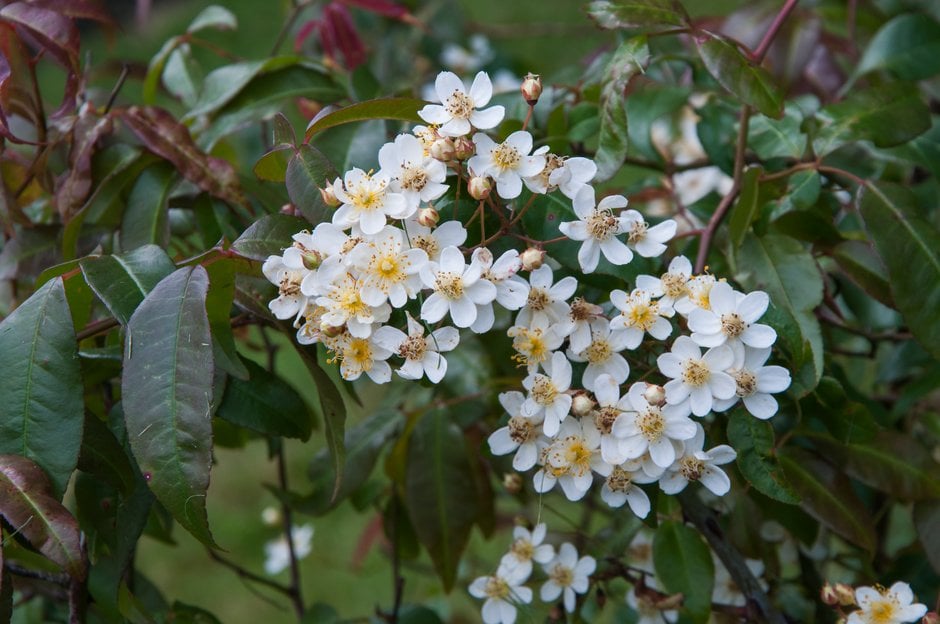Rosa cymosa
elderflower rose
A large, strong-growing, climber or scrambling rose to 5m tall, with bright red young shoots, few thorns, and compound grey-green leaves with seven, slender leaflets. Huge trusses of small, creamy-white, lightly scented flowers are produced in late spring to early summer, sometimes repeating in late summer; tiny, round, red hips follow

Buy this plant
Size
Ultimate height
4–8 metresTime to ultimate height
5–10 yearsUltimate spread
2.5–4 metresGrowing conditions
Moisture
Moist but well–drainedpH
Acid, Alkaline, NeutralColour & scent
| Stem | Flower | Foliage | Fruit | |
| Spring | White | Red | ||
|---|---|---|---|---|
| Summer | White | Green | ||
| Autumn | Green | Red | ||
| Winter |
Position
- Full sun
Aspect
West–facing or South–facing
Exposure
Sheltered Hardiness
H4Botanical details
- Family
- Rosaceae
- Native to GB / Ireland
- No
- Foliage
- Deciduous
- Habit
- Climbing
- Potentially harmful
- Fruit are ornamental - not to be eaten. Wear gloves and other protective equipment when handling. Pets: Fruit are ornamental - not to be eaten - see the HTA guide to potentially harmful plants for further information and useful contact numbers
- Genus
Rosa can be deciduous or semi-evergreen shrubs or scrambling climbers, with usually thorny stems bearing compound pinnate leaves and solitary or clustered flowers. Flowers may be followed by showy red or purple fruits in some varieties.
- Name status
Correct
How to grow
Cultivation
Grow in fertile, humus-rich, moist but well-drained soil in full sun, in a warm sheltered position. Best suited to southern counties. Mulch with well-rotted organic matter in late winter or early spring, and for best flowering apply a general rose or shrub fertiliser in early spring and again in early summer. See rose cultivation
Propagation
Propagate by softwood cuttings in early to mid spring, hardwood cuttings in late summer to autumn or by chip budding in summer; propagate by seed; species roses can be propagated by seed but need stratification and germination may take two seasons
Suggested planting locations and garden types
- Cottage and informal garden
- Wildlife gardens
- Wall side borders
Pruning
See pruning group 17 (climbing roses); don't prune flowers if fruits (hips) are required
Pests
May be susceptible to aphids, rose leafhopper, glasshouse red spider mite, scale insects, caterpillars, large rose sawfly, rose slugworm sawfly and rose leaf-rolling sawfly. Deer and rabbits can cause damage
Diseases
May be susceptible to rose black spot, rose rust, replant disease, rose dieback, and rose powdery mildew and sometimes honey fungus. May also be susceptible to disorders rose blindness and flower balling
Get involved
The Royal Horticultural Society is the UK’s leading gardening charity. We aim to enrich everyone’s life through plants, and make the UK a greener and more beautiful place.